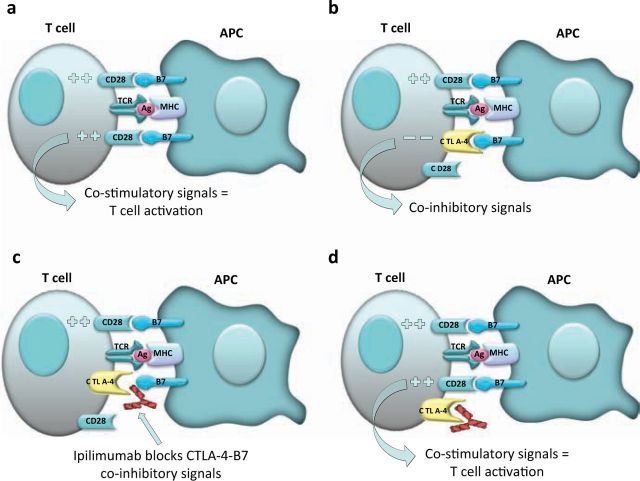Fig 1.
Mechanism of action of ipilimumab. Melanoma antigens (Ag) bound to the major histocompatibility complex (MHC) on the surface of antigen-presenting cells (APC) are presented to T-cells through the T-cell receptor (TCR): (a) T-cell activation is achieved by co-stimulatory signals to T-cells by CD28 receptor recognition of B7 ligands on APCs; (b) an important immunoregulatory signal is that of the cytotoxic T lymphocyte antigen-4 (CTLA-4) on T-cells which competes with CD28 for binding to B7 molecules, blocking the necessary co-stimulatory signals by APCs; (c) ipilimumab blocks binding of CTLA-4 to B7 on the surface of APCs; (d) this allows CD28-B7 complex assembly and co-stimulation, restoring T-cell activation.

